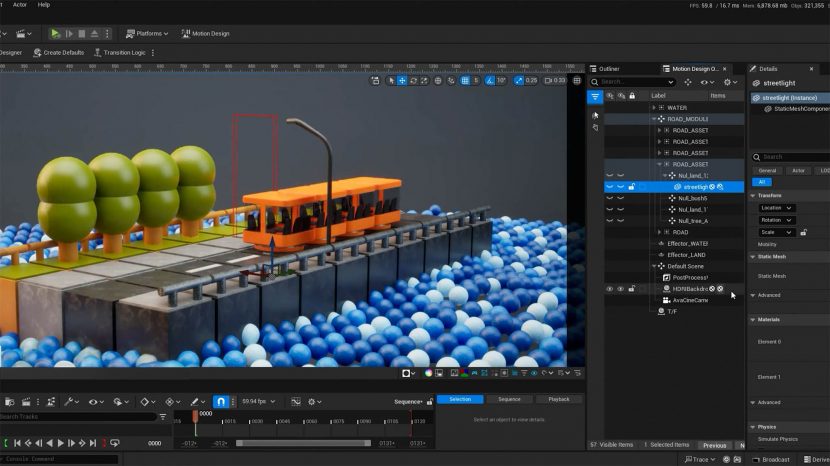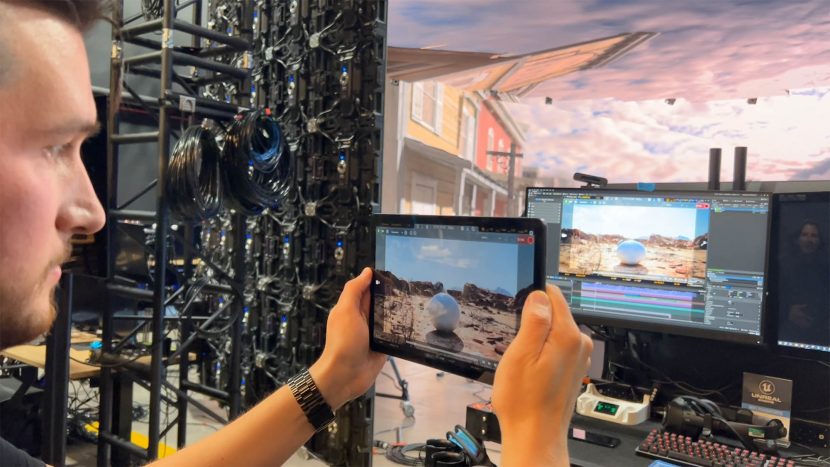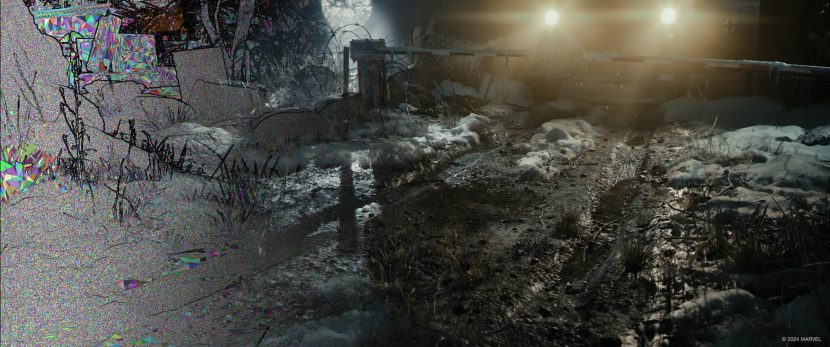Epic Games will formally release Unreal Engine 5.4, with new features and improvements to performance, visual fidelity, and productivity – including new depth tools for LED focus and defocus -providing the correct focus, – allowing for the combined effects of focus to the wall and focus of the virtual objects shown on the wall.
ICVFX
A new Depth of Field Compensation feature means users can accurately control the amount of DOF falloff of the digital content rendered by nDisplay as seen by the movie camera, yielding better results for close-up beauty shots.
VCam on Android
For first time Unreal VCam is released on Android, available on Google Play. The new release of Unreal VCam will enable virtual production-ready cinematography in real time from any Android device. This is the same app that has been known as Live Link VCAM and only available on iOS until now.
Unreal VCam enables filmmakers to translate traditional concepts like camera lensing, framing, and movement into Unreal Engine’s digital realm. Record realistic camera takes that can be further fine-tuned in editor to create elegant final compositions when assembled in Unreal Engine’s Sequencer. Users can review early set environments through the lens, previs shot cameras before a shoot, capture real takes during principal photography, create a new shot in post, or all of the above.
- Stream out the positional and rotational data live to an Unreal Engine instance via Live Link over a network.
- Drive the 3D camera within the real time environment.
- Record the camera data via Take Recorder for use in Sequencer.
Stream the camera view live from Unreal Engine:
- Visualize the shot on the Android devices with accurate depth of field.
- Modify camera parameters such as lens focus, iris, and zoom with immediate feedback.
- Review previously recorded takes and store bookmarks to interesting locations within the world.
Nanite
There are also a lot of features shown at GDC which we reported on last month. Such as the he new Nanite Dynamic Tesselation and other key aspects highlighted in the Marvel 1943 game also showed at GDC.
There are a range of rendering improvements. Moreover, the addition of software variable rate shading (VRS) via Nanite compute materials brings substantial performance gains. There’s also support for spline mesh workflows—great for creating roads on landscapes, for example. In addition, a new option to disable UV interpolation enables vertex animated textures to be used for World Position Offset animation; effectively, this means that the AnimToTexture plugin now works with Nanite geometry.
AI and machine learning
Neural Network Engine
In Unreal Engine 5.4, the Neural Network Engine (NNE) moves from Experimental to Beta status. With support for both in-editor and runtime applications, NNE enables developers to load and efficiently run their pre-trained neural network models. Example use cases include tooling, animation, rendering, and physics, each with different needs in terms of platform and model support. NNE addresses these disparate needs by providing a common API, enabling easy swapping of backends as required. There is also extensibility hooks to enable third-party developers to implement the NNE interface in a plugin.
Motion graphics
Unreal Engine 5.4 introduces an Experimental new Motion Design mode, equipped with specialized tools for authoring complex 2D motion graphics.

Developed in conjunction with production testing and feedback from leading motion graphics teams at broadcasters, this new dedicated mode is engineered to provide a powerful user experience and sustained productivity for motion designers using UE5. It offers a comprehensive suite of tools, including 3D cloners, effectors, modifiers, animators, and more.




